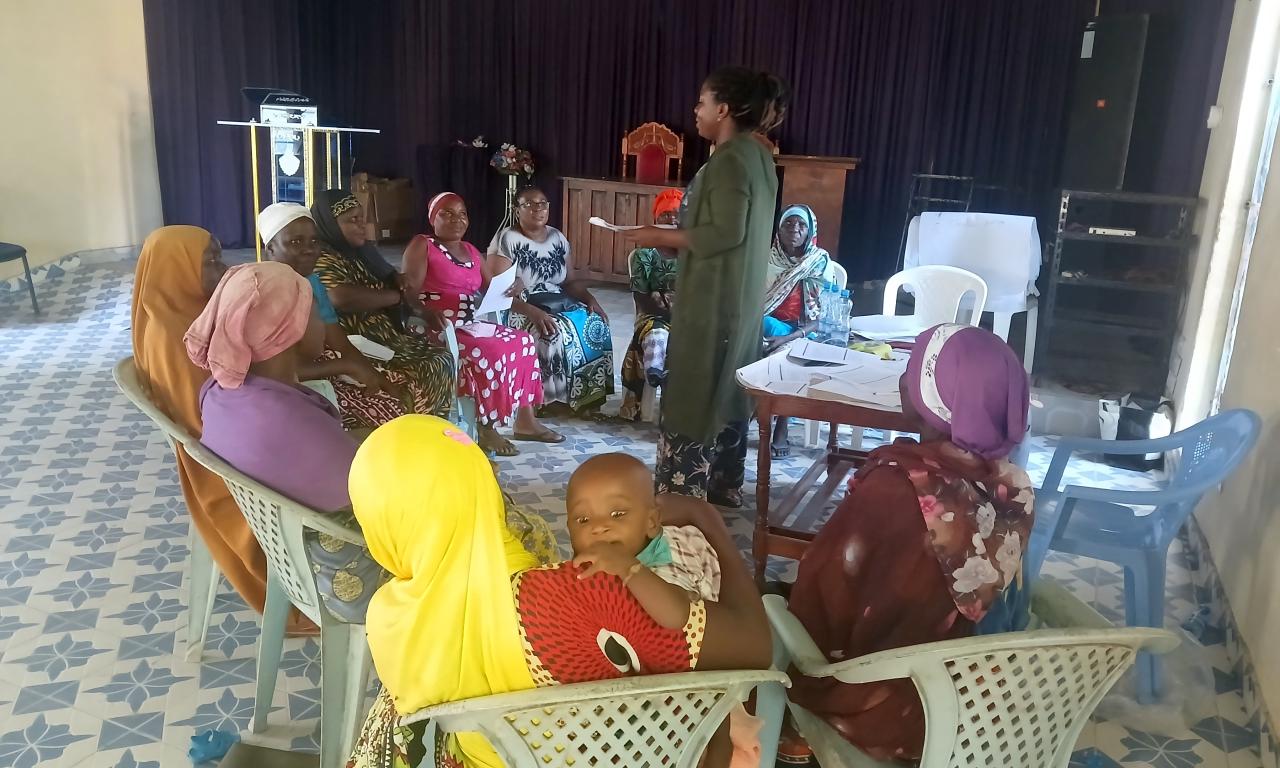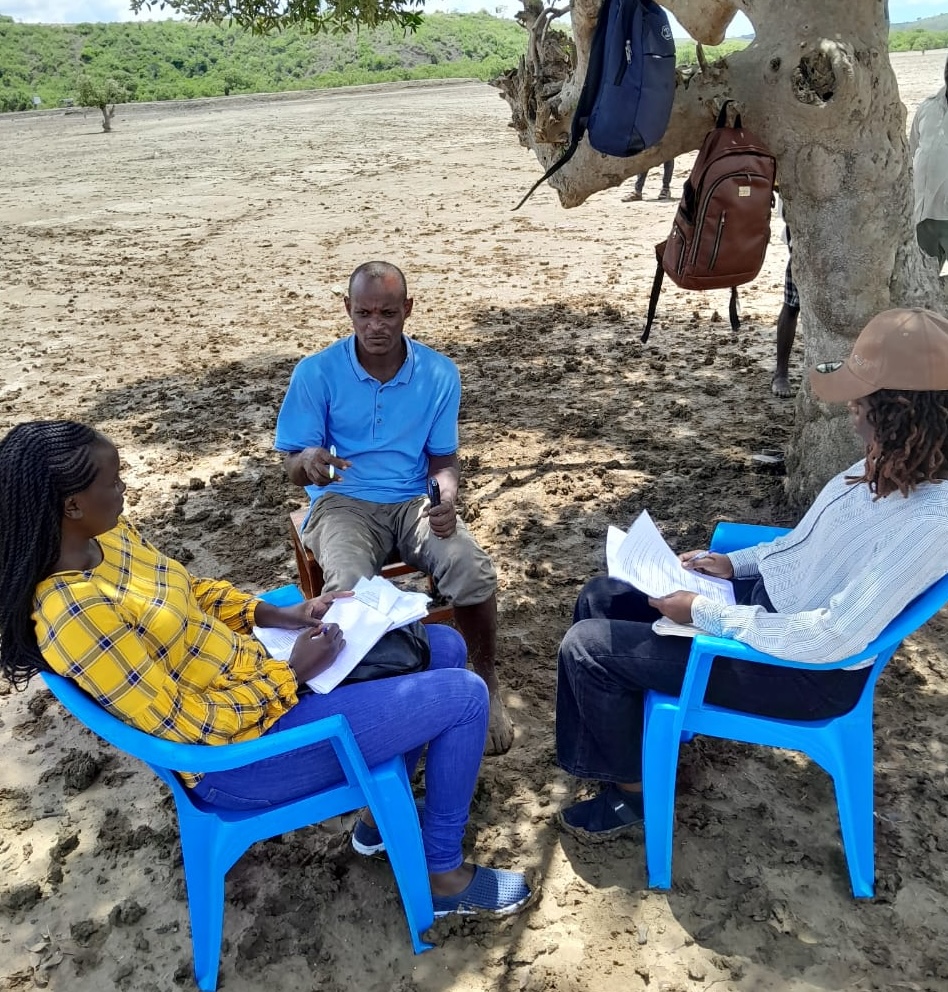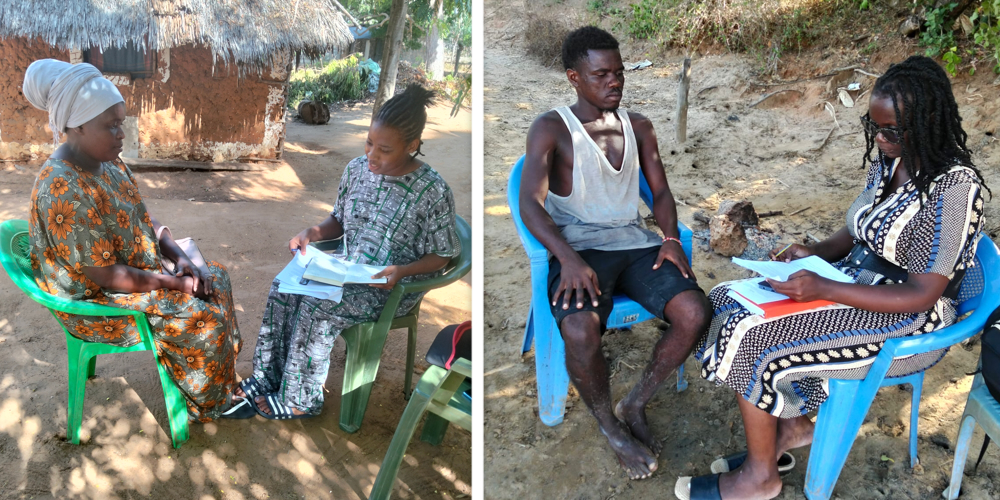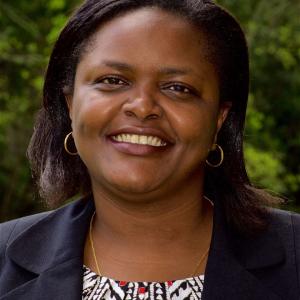
As part of the Asia-Africa BlueTech Superhighway (AABS) project, WorldFish is examining how aquaculture—particularly Integrated Multi-Trophic Aquaculture (IMTA)—can contribute to sustainable livelihoods for women and youth in Kenya’s coastal counties. The research was carried out in Kilifi, Kwale, and Mombasa counties in Kenya, where youth unemployment and underemployment remain a pressing challenge.
Despite their proximity to marine resources, youth and women in coastal Kenya face persistent exclusion from formal employment and livelihood opportunities. Traditional sectors like fishing, farming, and tourism are increasingly unstable due to overfishing, climate change, and limited access to capital. Once reliable, traditional sectors like fishing and farming have become increasingly unstable, strained by overfishing, climate change, lack of access to capital and insecurity (particularly in the tourism sector). Meanwhile, aquaculture, especially IMTA, is gaining recognition in the region and across the globe for its environmental sustainability and economic potential.
The research explores a critical question: What are the aspirations, motivations, and constraints shaping women’s and youth’s engagement with IMTA (as well as aquaculture and agri-food systems as a whole)? How do gender, age, and power dynamics influence who gets involved—and who gets left behind?
Reimagining Roles in Aquaculture In Kenya’s Coastal Counties
Early insights from the research point to the importance of integrating and strategically positioning gender considerations into the design of IMTA systems. For example, across the studied communities, young men are typically involved in pond construction, fish feeding, and harvesting. Women, particularly older women, are relegated to post-harvest roles like cleaning, drying, and selling. Seaweed farming—labor-intensive and low-margin—is seen as “women’s work,” while finfish aquaculture is reserved for men. These roles are shaped not only by gendered cultural norms, but also by capability of the locals.
For example, women often lack access to land or productive assets and must seek permission from spouses or elders to participate in training and income-generating activities. Young women face additional layers of exclusion—limited mobility, household responsibilities, and social expectations that prioritize caregiving over careers.
During focus group discussions conducted a “ladder of power and freedom” exercise that revealed that most young women saw themselves at the bottom of the ladder—lacking autonomy in livelihood choices—while young men placed themselves slightly higher. Few women across all ages described themselves as primary decision-makers in economic activities. Yet, women and youth are not passive. The research points to strong aspirations among young people who want to own businesses, contribute to their households’ food security, and gain financial independence. Many see aquaculture as promising—if the barriers to entry can be addressed. For instance, young women expressed interest in learning how to manage ponds, while young men were curious about the diversification aspects of IMTA systems to reduce risk and increase income.

Bridging the Gap: Aspirations vs. Barriers
While IMTA holds strong potential, early findings point to hurdles that need to be addressed to promote its adoption at different levels. At the individual level, we noted a lack of awareness and limited technical knowledge that hindered many young people, especially women, from viewing IMTA as a viable employment option. Women often opt out of aquaculture due to internalized beliefs that it is a “man’s job.” At the household level, many were disadvantaged because they lacked control over assets, time, and income.
Further, social stigma kept men and women from stepping outside traditional roles. Poor water quality, unpredictable weather, and degraded coastal ecosystems make aquaculture a risky activity, especially for those without financial buffers. This is further exacerbated by institutional barriers such as licensing bureaucracy, weak extension services, market instability, and lack of tailored financing that would support new players in aquaculture to thrive.
Strategies for Inclusive Engagement
Despite these challenges, early findings suggest multiple pathways to unlock IMTA’s potential to benefit women and youth. These include investing in gender- and youth-responsive training in mariculture the sector through community organizations and extension services, creating flexible opportunities for hands-on training hubs that account for caregiving schedules, and providing additional skills development in areas such as marketing and entrepreneurship.
Boosting access to finance and infrastructure, such as providing seed grants, youth-friendly term loans, and subsidized inputs like cages, fry and fingerlings, would open up interests for youth and women to enter into aquapreneurship vocation. In addition, facilitating market linkages for youth and women who are engaged in the production of fish and other aquatic foods, providing access to training in value addition, access to cold storage, and transport would benefit those embracing IMTA and boost their visibility.
Challenging gender norms is important. This can be achieved through intergenerational and community dialogues to promote shared responsibility in aquaculture, as well as involving heads of villages and counties to understand the importance of socio-economic inclusion in the mariculture sector, for the purposes of lifting up their communities’ economies, social harmony at large. In addition, integrating gender and youth targets in policy at the county-level blue economy plans will help build accountability. This would also ensure that youth and women are represented in aquaculture decision-making bodies.

Toward a More Equitable Blue Economy
Aquaculture, and IMTA in particular, can be a powerful vehicle for job creation, resilience, and environmental stewardship. But its promise will not be realized through technical solutions alone. It requires intentional efforts to shift who has access to resources, who has a voice, and power in this sector.
Emerging insights from our research suggest that coastal youth and women are not lacking ambition—they are lacking opportunity. By listening to their aspirations and addressing the structural and social barriers they face, providing them access to needed resources, we can build aquaculture systems that are not only productive, but also inclusive, sustainable, and equitable.

